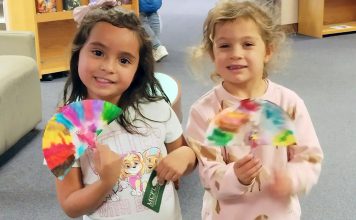
SALINAS VALLEY — Nearly $26 million has been awarded for park projects in the Salinas Valley as part of the state’s “Outdoors for All” initiative to enable all Californians to access parks and open space.
California State Parks announced Dec. 8 that a total of $548.3 million in grant funding will deliver new parks and renovations to existing parks in more than 100 communities across the state, including projects in King City, Greenfield and Salinas.
The grants, awarded through the Statewide Park Development and Community Revitalization Grant Program, represent the single-largest investment in state history in expanding access to parks in underserved communities, with new or enhanced parks funded in every region of California.
“People from all over the world come to visit our state’s natural wonders, but too many Californians today lack access to parks and open space in their own neighborhoods,” said Gov. Gavin Newsom in a news release. “This historic investment will revitalize and create new parks in more than 100 local communities, dramatically expanding access to the outdoors across the state and ensuring more Californians from all walks of life can reap the benefits for our hearts, minds and bodies for generations to come.”
King City’s downtown park
Among the 112 projects awarded grants this year is the City of King’s Downtown Park/Plaza Project, which received $2.135 million to construct a performance stage and entry plaza at the vacant property on the northeast corner of Broadway Street and Vanderhurst Avenue.
The new park also features open-lawn areas, outdoor seating and tables, children’s play elements, public art pieces, restroom building and parking lot, with landscaping and lighting throughout.
“King City greatly appreciates the governor’s commitment to rural communities, the California Department of Parks and Recreation recognizing the value of our project, and most importantly, I want to thank our community for their help and input in making this project a beautiful addition to our city,” said King City Mayor Mike LeBarre.
According to City Manager Steve Adams, the project was identified as a need through public workshops designed to plan improvements to the downtown area as part of the City of King’s economic development efforts. Its features were then developed through a series of public workshops, meetings and activities.
“Community input was a major criteria in the application review process, so the City is appreciative of the community’s participation to both create an excellent project design and assist in obtaining approval for the funding,” Adams said.
The Downtown Park/Plaza Project is one of the key features of the King City Downtown Streetscape Master Plan developed in 2017 and is “intended to help revitalize the downtown area and provide a place for the public to eat, play, enjoy events and relax while visiting the downtown,” Adams explained.
Construction is set to begin in spring 2022 and be completed by next fall.
In addition, the existing historical building at 110 Vanderhurst Ave. will be renovated and converted to a new Visitor and History Center as a separate but related project.
Greenfield rec center
City of Greenfield was awarded $8.5 million to create the new Greenfield Recreation Center and Park, along with acquiring nine acres of land for the project.
“Greenfield and our residents truly deserve this,” said Greenfield Mayor Lance Walker on social media. “Great things are on the horizon in The Heart of the Valley, our beloved ‘Greenfield.’ Thank you Paul (Wood), Jose (Sanchez), Jesus (Perez), committee, community and everyone involved!”
The project will construct a new gymnasium and recreation center building at the corner of Apple Avenue and 12th Street. Plans also include an accessible playground, multi-use sports field, looped walking/jogging path and parking lot, with lighting and landscaping throughout the park.
Community involvement was essential for the project, with the City of Greenfield hosting several workshops and surveys for public input.
“Thank you to everyone who worked on and supported this project,” stated Greenfield Recreation Department on social media after the announcement. “We could not have done this without your help and our community partners, who have supported this project since day one. The development of this project will help create more needed recreation opportunities for all our youth, adults and seniors.”
Salinas park projects
Two park projects in the City of Salinas also received grant funding: the Carr Lake Park Development was awarded $8.5 million and the Closter Park Improvement Project acquired $6.8 million.
Through the Big Sur Land Trust, the Carr Lake Park Development will create the new six-acre Carr Lake Park in Salinas. The project includes a nature playground, basketball court, skate spot, natural amphitheater, group picnic areas, trails and pathways, restrooms and parking lots.
The development is Phase I of a planned 73-acre open space area at 618 Sherwood Drive.
With the multimillion-dollar grant, City of Salinas will renovate Closter Park at 401 Towt St. The improvements include constructing a new fitness loop with exercise stations, batting cage, playground, climbable art and music soundmaking plaza, picnic and seating areas, event space, horseshoe pit and restrooms.
Renovations will also be made to the little league baseball field, adult/junior ball field, four basketball courts and the commemorative tree of life area with lighting.
The latest set of awards were funded with $153 million approved by the California Legislature in the 2021-22 state budget and $395.3 million from Proposition 68, a general obligation bond passed by the voters in 2018. Of the 468 applications requesting $2.42 billion this year, 112 grants were awarded for a total of $548.3 million.
“California State Parks is incredibly proud to announce grant funding for projects that will improve access to parks and open space and contribute to a better quality of life for so many Californians,” said California State Parks Director Armando Quintero. “Many of these projects will become a source of community pride, thanks to neighborhood residents, local park agencies and non-profit organizations who worked together to design vibrant parks reflecting each community’s unique needs and creativity.”














